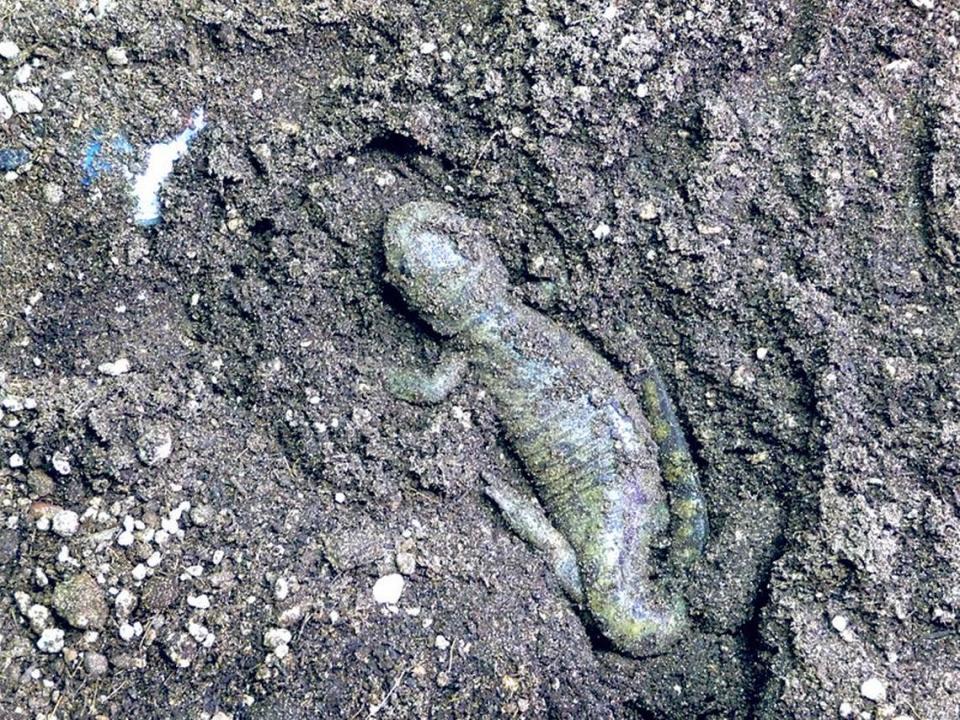Idaho has a state amphibian and, yep, it’s poisonous. But is it dangerous to humans?
Idaho has 15 official state emblems, from the wacky, such as the Oryctodromeus as the state dinosaur, to the more mundane, like the state vegetable (no points for guessing the vegetable). But did you know that the Gem State even has a state amphibian?
That’s right, Idaho has an official state amphibian.
In 2015, the Idaho Legislature decided that the Idaho giant salamander was worthy of representing the state as the official amphibian.
The Idaho giant salamander was proposed in 2015 by Les Bois Junior High student Ilah Hickman, who pointed out that the salamander lived almost exclusively in Idaho and was a perfect contender for the state amphibian.
Children around the state wrote to former House State Affairs Committee Chairman Tom Loertscher asking for the Idaho giant salamander to become the state amphibian, according to previous Statesman reporting. The Legislative Research Library still keeps those letters in its records.

Hickman’s bill was killed earlier in the 2015 legislative session before being brought back to life and quickly passed by the House and Senate in the final hours of that session.
The Idaho giant salamander can be found throughout the north-central parts of the state, according to Idaho Fish and Game, with a tiny sliver of the population also living in Montana.
What does the Idaho giant salamander look like?
Idaho’s state amphibian is most distinguishable from other salamanders in the state due to its size, according to the U.S. Forest Service. On average, the salamander grows to between 4.5 and 6 inches, but in some cases, it can grow over a foot in length.
The Idaho giant salamander has a large head and a marbled pattern along its back that is copper or tan against a darker black or gray background. The closest salamander in appearance would be the tiger salamander, but they differ in that the tiger salamander has costal grooves along its side.

People who see the salamander in the wild are likely only seeing its third and final life stage as an adult, which occurs when they are 18-24 months of age. Before that, the salamander appears first as an egg amid a group of 135-200 eggs and then as larvae, when it spends most of its time underwater.
Where can you find them?
Idaho giant salamanders typically live under moist rocks, logs, or bark in coniferous forests near streams, lakes, and ponds, according to the U.S. Forest Service. They also typically only come out at night, meaning you’re unlikely to see one unless you’re explicitly overturning rocks and vegetation.
The salamander isn’t picky about its food, eating whatever land creatures come close enough to eat: small snakes, mice, frogs and even other salamanders.
The best places to find the salamander are in the north-central areas of the state. But if you’re trying to narrow it down, Idaho giant salamanders can often be located near the start of the Nez Perce National Historic Trail in Lewiston.
Are they dangerous to humans?
Idaho giant salamanders are coated in a slimy substance that makes it harder for predators to catch them and contains a poison that makes them taste bad, according to Idaho Fish and Game.
While this poison isn’t fatal to humans, it can cause irritation and sickness if ingested. However, salamanders are also known to carry salmonella, a bacterial disease that can cause diarrhea, fever and stomach cramps.
The bite from an Idaho giant salamander can also break skin.
But it’s also worth noting that picking up a salamander isn’t just risky for humans. Salamanders have very absorbent skin, which means if handled incorrectly, oils, salts and lotions on our hands can be absorbed by the salamander and potentially cause it harm.

